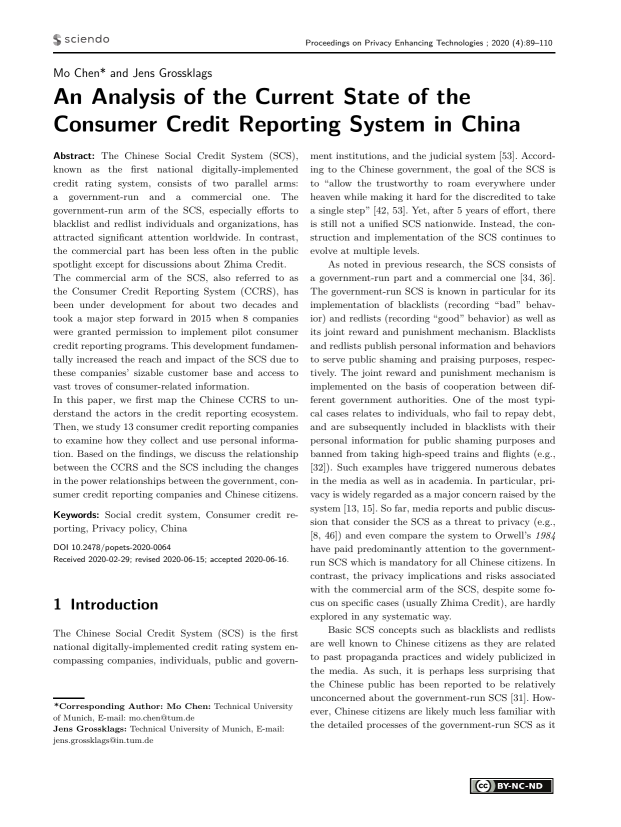An Analysis of the Current State of the Consumer Credit Reporting System in China
Authors: Mo Chen (Technical University of Munich), Jens Grossklags (Technical University of Munich)
Volume: 2020
Issue: 4
Pages: 89–110
DOI: https://doi.org/10.2478/popets-2020-0064
Abstract: The Chinese Social Credit System (SCS), known as the first national digitally-implemented credit rating system, consists of two parallel arms: a government-run and a commercial one. The government-run arm of the SCS, especially efforts to blacklist and redlist individuals and organizations, has attracted significant attention worldwide. In contrast, the commercial part has been less often in the public spotlight except for discussions about Zhima Credit. The commercial arm of the SCS, also referred to as the Consumer Credit Reporting System (CCRS), has been under development for about two decades and took a major step forward in 2015 when 8 companies were granted permission to implement pilot consumer credit reporting programs. This development fundamentally increased the reach and impact of the SCS due to these companies’ sizable customer base and access to vast troves of consumer-related information. In this paper, we first map the Chinese CCRS to understand the actors in the credit reporting ecosystem. Then, we study 13 consumer credit reporting companies to examine how they collect and use personal information. Based on the findings, we discuss the relationship between the CCRS and the SCS including the changes in the power relationships between the government, consumer credit reporting companies and Chinese citizens.
Keywords: Social credit system, Consumer credit reporting, Privacy policy, China
Copyright in PoPETs articles are held by their authors. This article is published under a Creative Commons Attribution-NonCommercial-NoDerivs 3.0 license.

